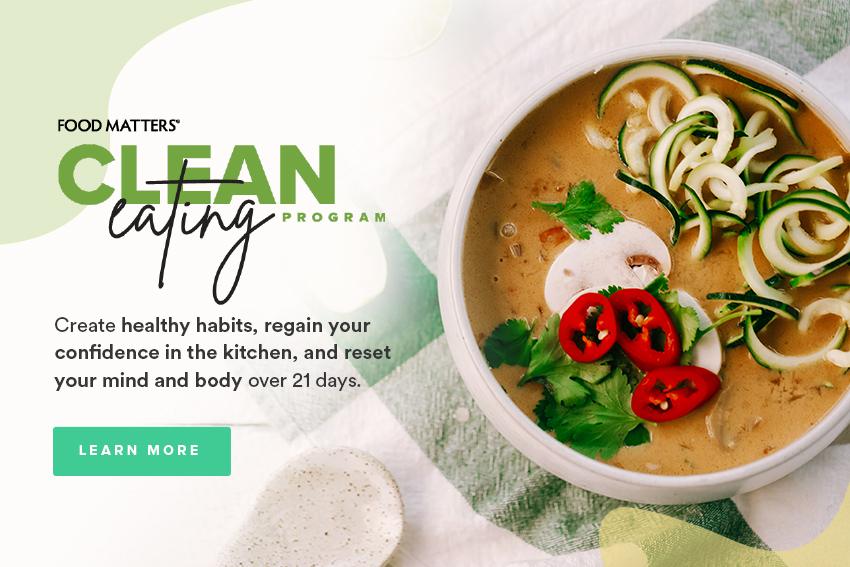A New Spin On Spinach
With the rise in popularity of “superfood” greens such as kale and collard greens, it appears that that not so trendy workhorse spinach has taken a backseat. But this tasty, affordable and incredibly versatile green deserves a place as a staple item on the household shopping list, as it remains one of the most nutritionally dense foods around.
"It’s no wonder spinach was Popeye’s food of choice, with just one cup serving providing 35% of your daily iron needs, 84% of your manganese, 65% of your Folate and a whopping 300% of your daily vitamin A requirement!"
Spinach is said to have originated in ancient Persia (Iran) and has a relatively recent history in Europe when compared to other vegetables. In addition to Popeye, one of Spinach’s greatest proponents was Catherine de Medici, an Italian historical figure in the 16th Century. She was such a fan that when she would depart Florence on her travels, she would request that her cooks bring spinach to prepare! It’s thanks to this that chefs nowadays refer to dishes prepared on a bed of spinach as “a la Florentine”.
As part of the amaranth family, there are three different types of spinach generally available – savoy, smooth-leaf, and baby spinach, with the latter being the most popular. Savoy has crisp, creased curly leaves, whilst smooth-leaf (or English) spinach has flat, unwrinkled, spade-shaped leaves that are great in soups and stews. All varieties of spinach have a milder flavour and delicate texture compared to most leafy greens (such as kale), making spinach a much more child-proof vegetable, and an easy addition to any juice or smoothie.
"When shopping for spinach, try to choose organic spinach leaves if you can as this leafy green is exposed to pesticides more readily than, say, a root vegetable that is more protected in the ground as it grows."
If you aren’t able to afford organic, wash your spinach with a little white or apple cider vinegar to reduce any pesticide residue. Calorie for calorie, leafy green vegetables such as spinach provides more nutrients than any other food. This is why health professionals across the world and most dietary disciplines (vegan, paleo, holistic, mainstream) are united in their belief that they should form the bulk of your diet. Spinach has a high water content, helping to not only keep you hydrated but also making you feel fuller and reducing your tendency to load up on denser, nutritionally poorer choices.
Spinach is among a small number of foods that contain oxalates, naturally-occurring substances found in plants and some animal products. Some research has suggested that the oxalates in Spinach may interact with calcium absorption. To be on the safe side, if you do take a calcium supplement it is best to take it at least two hours before or after a meal containing spinach (not in the morning with your green smoothie) to increase the chances of optimal absorption … Otherwise, you may end up with very expensive looking pee!
Spinach is one of only a few vegetables that many nutritionists recommend cooking to help reduce its concentration of oxalic acid. However, to preserve the nutrients and flavour, don’t overcook spinach. Simply cook it in your frying pan or steamer for under 5 minutes until it begins to wilt. Baby spinach has a lower oxalate content and can be enjoyed raw.
"The high iron and protein content of spinach is one of it’s super-human strengths, but you may be surprised to learn that by regularly consuming spinach, you can protect yourself against inflammatory problems, oxidative stress-related problems, cardiovascular problems, and bone problems."
Among one of the world's healthiest vegetables, spinach is rich in vitamins and minerals and is also a concentrated source of health-promoting phytonutrients such as carotenoids and flavonoids, all of which provide powerful antioxidant protection.
In addition to being easier to digest than its cruciferous vegetable counterparts (such as kale), recent lab research has shown that glycoglycerolipids from spinach can actually help protect the lining of the digestive tract from damage — especially damage related to inflammation. Spinach is also a great source of Folate, a B vitamin that is important for women during pregnancy.
Not only are bright, vibrant-looking spinach leaves more visually appealing, they’re also more nutritious. Research has shown that spinach leaves that look bright-coloured and fresh have greater vitamin C content than leaves that are paler in colour. Choose spinach that has vibrant deep green leaves with no signs of yellowing or dryness. The leaves should not be wilted, bruised, or have a slimy coating, as this is an indication of decay.
Avoid washing spinach before storing as the exposure to water encourages spoilage and creates a slimy coating. Instead, store spinach in a tightly sealed container (where no air can enter) in the fridge where it will keep fresh for up to 5 days. Avoid storing cooked spinach, as it will not keep very well.
Instead, store spinach in a tightly sealed container (where no air can enter) in the fridge where it will keep fresh for up to 5 days. Avoid storing cooked spinach, as it will not keep very well.

You can serve spinach in a number of ways:
•Add spinach to your favourite protein when creating stir-fries
•Add chopped spinach into your soups and stews, just before you’re about to turn the heat off.
•Make your salads on a base of baby spinach as opposed to lettuce, as it packs a larger nutritional punch
•Add spinach to your morning routine by including it in your smoothies, juices, or omelettes
•Add spinach to your sandwiches
•Add a cup of spinach to your pasta sauce
•Stir chopped spinach into your favourite risotto or pasta dish
•Sprinkle baby spinach over your pizza
•Add spinach to your dips
It’s the perfect loaf for mopping up soup and feeding a crowd!

SPINACH LOAF
Ingredients
- 250 g (9 oz/21/2 cups) almond flour
- 1/4 teaspoon Celtic sea salt
- 1 1/2 teaspoons baking powder
- 1/4 teaspoon bicarbonate of soda (baking soda)
- 2 bunches English spinach blanched and drained
- 3 organic eggs, beaten
- 3 tablespoons additive-free coconut milk
- 1 teaspoon freshly squeezed lemon juice
- 1/4 cup unsalted butter, melted
- 1 tablespoon apple cider vinegar
What to do
- Preheat the oven to 175°c (345°F/gas 3–4) and grease and flour a 20 x 9 cm (8 x 31/2 inch) loaf (bar) tin.
- In a large bowl, combine the almond flour, salt, baking powder and bicarbonate of soda.
- Whizz the spinach in a processor (or chop it finely) and add to the bowl, along with the eggs, coconut milk, lemon juice, butter and apple cider vinegar.
- Mix thoroughly.
- Spoon the mixture into the prepared tin and level the surface with the back of a spoon dipped in cold water.
- Bake loaf on middle rack of the oven for about 45 minutes or until a skewer inserted comes out clean.
- Turn out onto a wire rack to cool, then enjoy!
- The bread will keep for up to 1 week in a sealed container in the fridge, or can be frozen for up to 1 month
Take the stress out of cooking with 21-days of guided meal plans, shopping lists, and nutrition support. You’ll find all of this, and more, in our signature Clean Eating Program.










